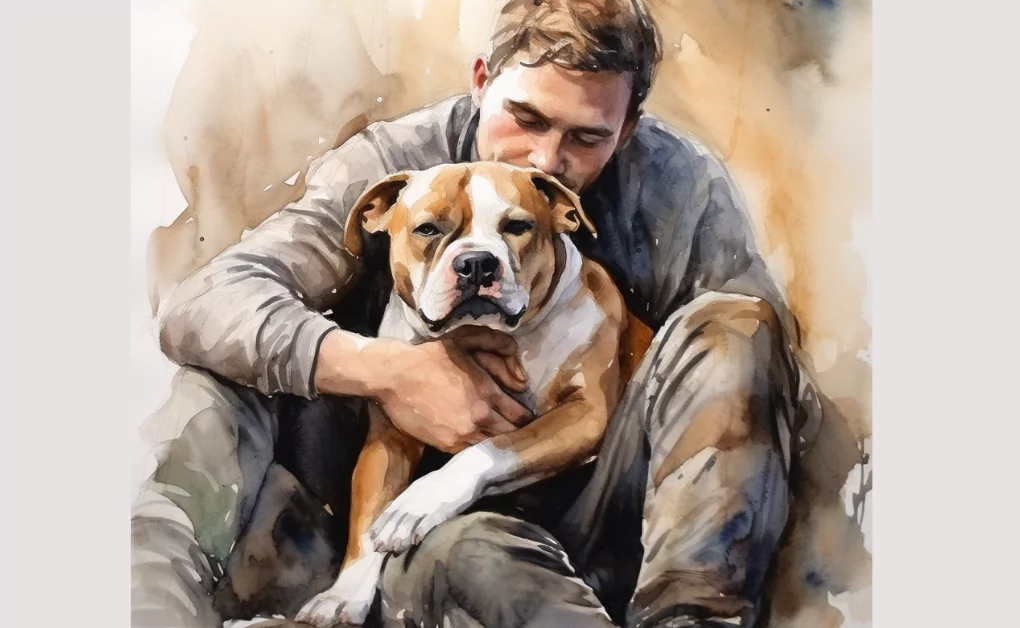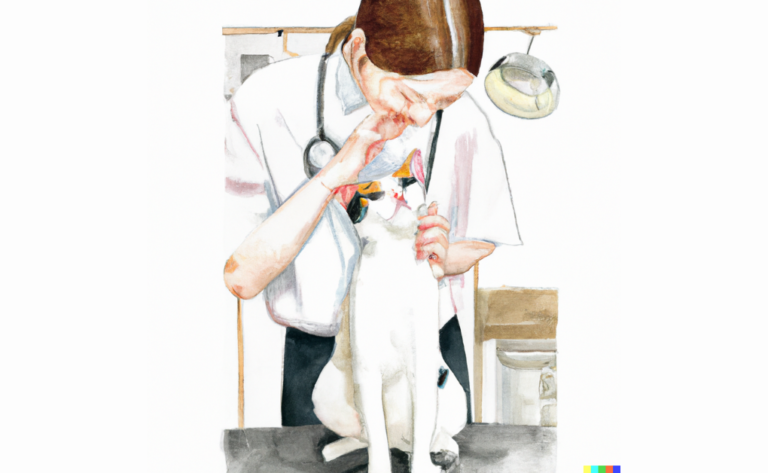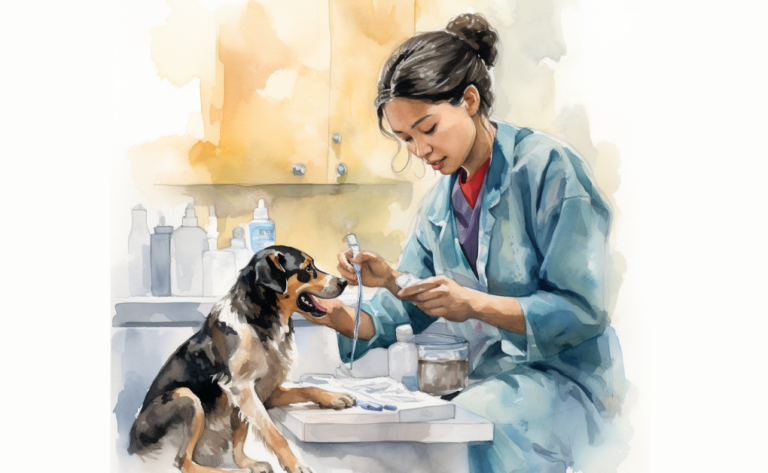Understanding Brachycephalic Syndrome in Dogs
What is it?
How is it Treated?
Breed Predispositions
French Bulldog, Pug, Boston Terrier, English Bulldogs, Cavalier King Charles Spaniels and Shih Tzus
Introduction
During a regular play session, Maria noticed her adorable French Bulldog, Otis, was struggling to breathe and appeared to be overheating more easily than usual. Concerned about her beloved pet’s well-being, Maria scheduled an appointment with her veterinarian for a thorough evaluation. The vet diagnosed Otis with brachycephalic syndrome, a respiratory condition common in dogs with short noses and flat faces.
Brachycephalic Syndrome is a prevalent condition found in dogs and cats, particularly those of the brachycephalic breed, defined by their characteristic short, squashed faces and shallow respiratory systems. This syndrome is an umbrella term for various anatomical abnormalities in the airways that can lead to respiratory syndrome, posing breathing difficulties, limited exercise tolerance, and other related complications. Therefore, knowing about Brachycephalic Syndrome is crucial for owners and enthusiasts of these breeds to comprehend and manage the unique health issues stemming from their unusual facial structure.
Brachycephalic Syndrome encompasses a group of upper airway diseases frequently encountered in breeds with flat faces and short noses, such as Pugs, Bulldogs, and French Bulldogs. Their distinctive facial features, a result of genetic selection, unintentionally lead to anatomical airway obstructive syndrome. The primary components of Brachycephalic Syndrome include:
- Stenotic Nares: These narrow or small nostrils can partially or severely obstruct the dog’s airflow, making it challenging for the dog to breathe, especially during physical activity or in warm weather.
- Elongated Soft Palate: An extended soft palate that intrudes too far into the airway is common in brachycephalic dogs. This surplus tissue can partially or fully obstruct the airway, triggering difficulties in breathing, gagging, or coughing.
- Hypoplastic Trachea: Some flat-faced dogs possess a trachea (windpipe) smaller than usual, further hindering airflow and amplifying breathing difficulties.
- Everted Laryngeal Saccules: Brachycephalic dogs’ increased respiratory effort can cause the tiny sacs within the larynx (voice box), or everted saccules, to invert or flip inside out. This condition blocks the airway and exacerbates breathing problems, potentially leading to laryngeal collapse.
These abnormalities can manifest individually or collectively, differing in severity from one dog to another. However, if untreated, Brachycephalic Syndrome can significantly affect a dog’s quality of life and may even lead to more severe complications such as congenital obstructive upper airway disease.
Causes of Brachycephalic Syndrome in Dogs
The causes of Brachycephalic Syndrome in dogs primarily stem from their inherent genetic makeup and the deliberate breeding for distinct physical characteristics. These elements have contributed to the emergence of the anatomical peculiarities that define the syndrome:
- Deliberate breeding for compact snouts and flat faces: Breeders have purposefully produced dogs with these traits, resulting in anatomical peculiarities in brachycephalic dogs, such as the Boston Terrier and English Bulldog.
- Genetics: As a genetic condition, Brachycephalic Syndrome can be transmitted from parent brachycephalic dogs to their offspring.
- Disparity between skull bones and soft tissues: Selective breeding has shortened skull bones, but the soft tissues of the respiratory system have not correspondingly shrunk. This imbalance leads to upper airway abnormalities like stenotic nares, elongated soft palate, everted laryngeal saccules and hypoplastic trachea, contributing to higher airway resistance.

These abnormalities can manifest individually or collectively, differing in severity from one dog to another. However, if untreated, Brachycephalic Syndrome can significantly affect a dog’s quality of life and may even lead to more severe complications such as congenital obstructive upper airway disease.
Causes of Brachycephalic Syndrome in Dogs
The causes of Brachycephalic Syndrome in dogs primarily stem from their inherent genetic makeup and the deliberate breeding for distinct physical characteristics. These elements have contributed to the emergence of the anatomical peculiarities that define the syndrome:
- Deliberate breeding for compact snouts and flat faces: Breeders have purposefully produced dogs with these traits, resulting in anatomical peculiarities in brachycephalic dogs, such as the Boston Terrier and English Bulldog.
- Genetics: As a genetic condition, Brachycephalic Syndrome can be transmitted from parent brachycephalic dogs to their offspring.
- Disparity between skull bones and soft tissues: Selective breeding has shortened skull bones, but the soft tissues of the respiratory system have not correspondingly shrunk. This imbalance leads to upper airway abnormalities like stenotic nares, elongated soft palate, everted laryngeal saccules and hypoplastic trachea, contributing to higher airway resistance.
These causes are interconnected, and the strategy for mitigating the prevalence of Brachycephalic Syndrome rests in adopting responsible breeding protocols. These involve producing dogs with less pronounced features and refraining from breeding severely affected dogs displaying severe respiratory problems.
Symptoms of Brachycephalic Syndrome in Dogs
The manifestations of Brachycephalic Syndrome in dogs can fluctuate based on the condition’s intensity and the particular anatomical irregularities present. Typical symptoms include the following:
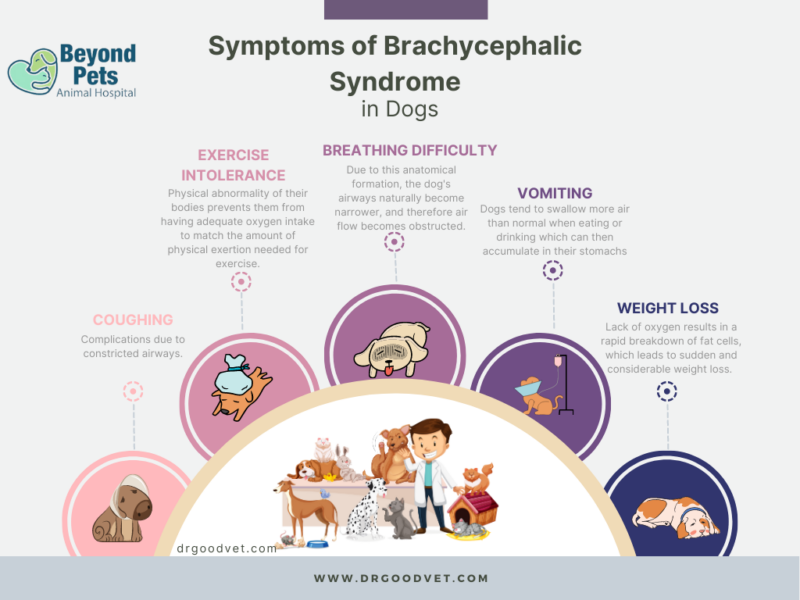
Observing brachycephalic dogs for any indicators of severe respiratory distress, such as difficulty breathing or severe symptoms like vomiting, is crucial. If the symptoms exacerbate or the dog encounters difficulty breathing, seeking immediate veterinary attention is necessary to ensure the animal’s health. Remember, severe symptoms could indicate that the elongated soft palate has been pulled into the trachea.
Diagnosing Brachycephalic Syndrome in Dogs
Diagnosing Brachycephalic Syndrome in dogs entails a blend of physical inspection, examination of medical history, and possibly further diagnostic procedures to gauge the condition’s intensity and pinpoint the particular anatomical anomalies present. Here are the measures veterinarians undertake to confirm a diagnosis of brachycephalic syndrome:
- Physical inspection: The vet initiates a comprehensive physical check-up of the dog, focusing on the dog’s head, face, and respiratory system. They will look for clinical indicators such as noisy breathing, stenotic nares, and instances where the soft palate is too long.
- Medical history: The animal hospital’s veterinarian will study the dog’s medical records, breed susceptibility, and any past respiratory complications and inquire about any symptoms the brachycephalic animal has demonstrated.
- Laryngoscopy: In specific scenarios, the vet might conduct a laryngoscopy, involving inserting a tiny camera into the dog’s airway to scrutinize the larynx and other structures, enabling them to evaluate the obstruction’s severity and identify issues such as everted laryngeal saccules or a collapsing trachea.
- Radiography: The vet may suggest X-rays of the dog’s chest and neck to assess the trachea’s dimensions and form, and detect any indications of aspiration pneumonia or other respiratory complications.
- Blood tests: The vet might perform blood tests to evaluate the dog’s overall health and exclude any other potential reasons for the dog’s symptoms.
Through these diagnostic techniques, veterinarians can accurately detect Brachycephalic Syndrome, ascertain its severity, and devise an appropriate treatment regimen for the affected dogs. Upper airway abnormalities common in dogs with brachycephalic syndrome typically inform these diagnostics and treatment plans. Additional soft tissue structures may also be evaluated during these tests.
Treatment for Dogs with Brachycephalic Syndrome
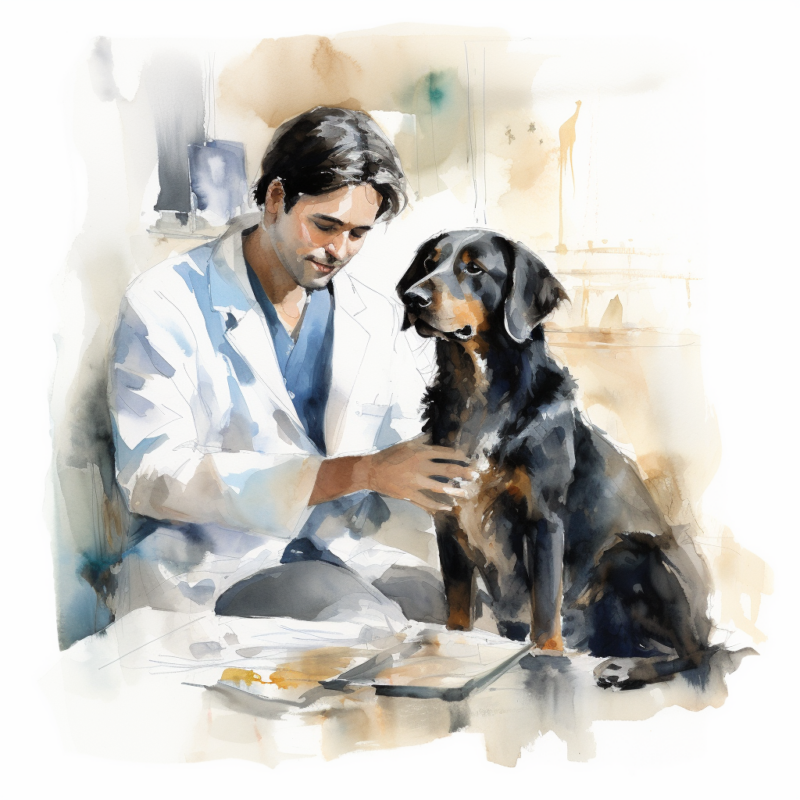
The therapeutic approach for Brachycephalic Syndrome in dogs hinges on the severity and the specific anatomical irregularities. Veterinarians might propose a blend of medical management and surgical correction to enhance the dog’s well-being and ease respiratory distress. Here are the critical treatment strategies for Brachycephalic Syndrome:
Medical management: For less severe cases, medical management may be adequate to alleviate symptoms. This can comprise weight control, circumventing exercise in hot or humid weather, using a harness rather than a collar, and handling secondary respiratory infections with suitable medications.
- Surgical intervention: In cases of a moderate to severe nature or when medical management alone is inadequate, surgical correction may be warranted. Commonly in brachycephalic dogs, surgeries include:
- Stenotic nares correction: This procedure involves widening the nostrils to enhance airflow by removing a small portion of tissue.
- Elongated soft palate resection: This soft tissue surgery involves trimming the excess length of the soft palate to minimize airway obstruction.
- Everted laryngeal saccules resection: This procedure involves the removal of the everted saccules to enhance airflow through the larynx.
- Tracheal stenting or surgery: In rare cases of tracheal collapse, a stent may be positioned to keep the airway open, or surgery may be performed to rectify the issue.
- Postoperative care: After surgery, it’s paramount to provide appropriate postoperative care, including pain management, monitoring for complications, and ensuring proper healing. The veterinarian will give specific instructions for postoperative care and follow-up appointments.
- Ongoing management: Regular veterinary evaluations are crucial to monitor the dog’s condition, and lifestyle alterations may be required to prevent exacerbating symptoms. Maintaining a healthy weight and avoiding exposure to allergens, irritants, and extreme temperatures can help manage Brachycephalic Syndrome over time.
Through these treatment options, veterinarians can effectively handle the respiratory issues linked with Brachycephalic Syndrome and significantly improve the affected dog’s quality of life. Anesthesia is always cautiously administered as this syndrome has been linked to increased risk during such procedures. Soft palate elongation, a common secondary abnormality, can be surgically corrected for relief. The overall treatment success rate for patients treated at the hospital was 94.2%, and the overall mortality rate was 2.8%.
Prevention of Brachycephalic Syndrome in Dogs
Mitigating the risks of Brachycephalic Syndrome in dogs primarily revolves around ethical breeding practices and appropriate care to minimize the associated risks. Here are a few pivotal ways to deter the development of Brachycephalic Syndrome in dogs:
- Ethical breeding: Opt for credible breeders who place the health and welfare of their dogs above overemphasized physical traits. Breeding programs should concentrate on dogs with less pronounced brachycephalic features and endorse genetic diversity to diminish the occurrence of Brachycephalic Syndrome in successive generations.
- Early detection: Regular veterinary check-ups can aid in spotting early signs of Brachycephalic Syndrome, facilitating immediate intervention and possibly thwarting the condition from worsening. This is especially important for older dogs and dogs with this condition.
- Weight management: Keeping a healthy weight is critical for all dogs, specifically brachycephalic breeds. Excessive weight can intensify respiratory issues, so a balanced diet and regular exercise are essential.
- Avoid environmental triggers: Reduce exposure to allergens, irritants, and extreme temperatures that can intensify respiratory problems. For example, utilize air purifiers, keep your home clean to minimize indoor allergens, and refrain from walking your dog during peak pollen periods, severe heat, or cold.
- Appropriate equipment: Employ a harness instead of a collar when walking your dog to prevent pressure on the throat, which can worsen breathing difficulties.
- Monitor exercise: Know your dog’s exercise levels and modify activities according to their tolerance. Provide frequent breaks and watch for signs of respiratory distress, especially in dogs suffering from this condition.
- Education: Understand the specific needs of brachycephalic breeds and be ready to offer appropriate care, including consistent grooming to maintain their facial folds clean and dry. This is crucial as many brachycephalic dogs include breeds like Bulldogs, Pugs, and Shih Tzus.
By adhering to these preventive measures, dog owners can aid in lowering the risks tied to Brachycephalic Syndrome and ensure their pets relish a better quality of life. While it might not be achievable to entirely prevent Brachycephalic Syndrome in predisposed breeds, responsible pet ownership and awareness of the condition can profoundly affect your dog’s well-being, particularly when considering factors such as soft tissue and laryngeal cartilage health.
What is the Prognosis For Dogs With Brachycephalic Airway Syndrome?
The prognosis for dogs, and even some breeds of cats, with Brachycephalic Airway Syndrome, largely hinges on the severity of the condition, the specific anatomical abnormalities present, and the overall animal health. The promptness of diagnosis and treatment also plays a critical role.
Dogs that are older or have mild cases of the syndrome can often lead relatively everyday lives with the appropriate treatment, which may encompass lifestyle modifications, medical management, or in some cases, surgical intervention. However, these dogs may remain at an elevated risk for respiratory distress, particularly under stressful or extreme weather conditions. Therefore, they require ongoing monitoring and management.
In severe cases, or if the brachycephalic syndrome is left untreated, it can escalate to life-threatening complications such as severe respiratory distress, collapse, or even death. This is due to the interference of soft tissue with the airway. Moreover, even with treatment, severely affected dogs may continue to experience respiratory difficulties and related complications, impacting their quality of life.
Surgical intervention can often drastically improve the prognosis for dogs with moderate to severe Brachycephalic Airway Syndrome. However, any surgical procedure has inherent risks, which should be thoroughly discussed with your veterinarian. The success of surgical interventions also depends on the specific abnormalities present and the dog’s overall health.
Regular veterinary check-ups, weight management, avoiding environmental triggers, and possibly modifying exercise levels are all integral to ongoing management. With appropriate direction, many dogs suffering from Brachycephalic Airway Syndrome can lead content, fulfilling lives. However, it’s essential to remember that each animal is unique, and their prognosis can vary. Therefore, regular discussions with your veterinarian about your dog’s condition, treatment options, and prognosis remain crucial.
Frequently Asked Questions
Disclaimer: The information provided on this veterinary website is intended for general educational purposes only and should not be considered as a substitute for professional veterinary advice, diagnosis, or treatment. Always consult a licensed veterinarian for any concerns or questions regarding the health and well-being of your pet. This website does not claim to cover every possible situation or provide exhaustive knowledge on the subjects presented. The owners and contributors of this website are not responsible for any harm or loss that may result from the use or misuse of the information provided herein.

